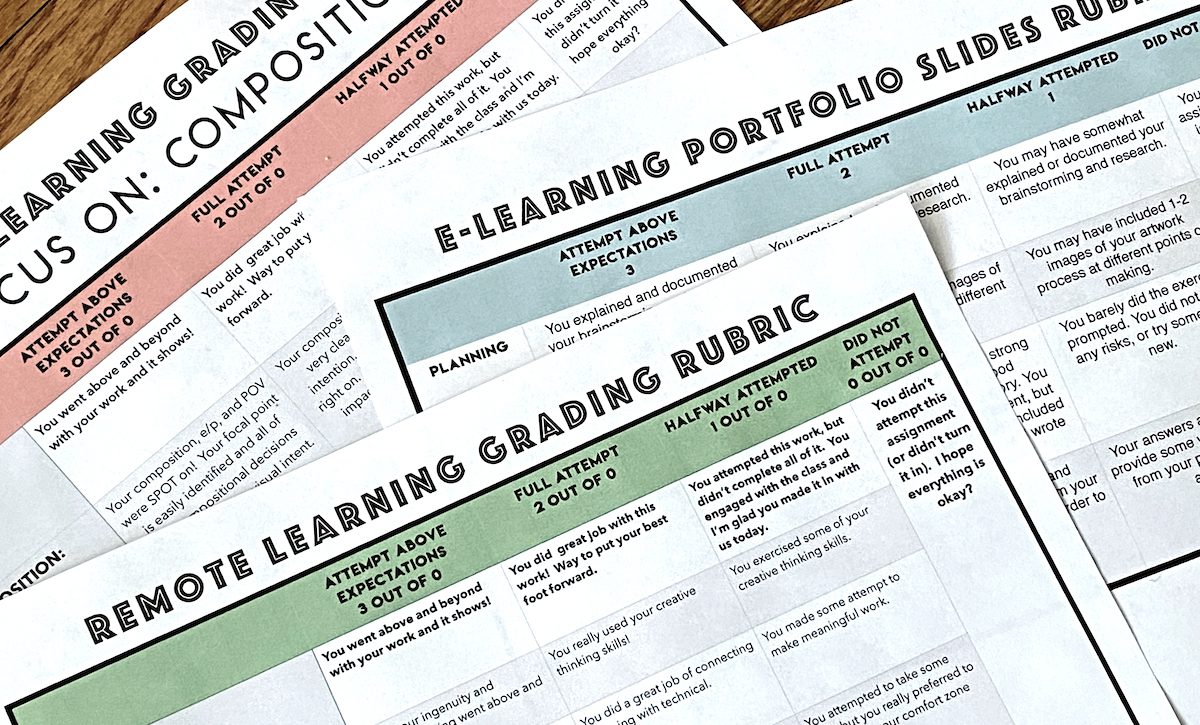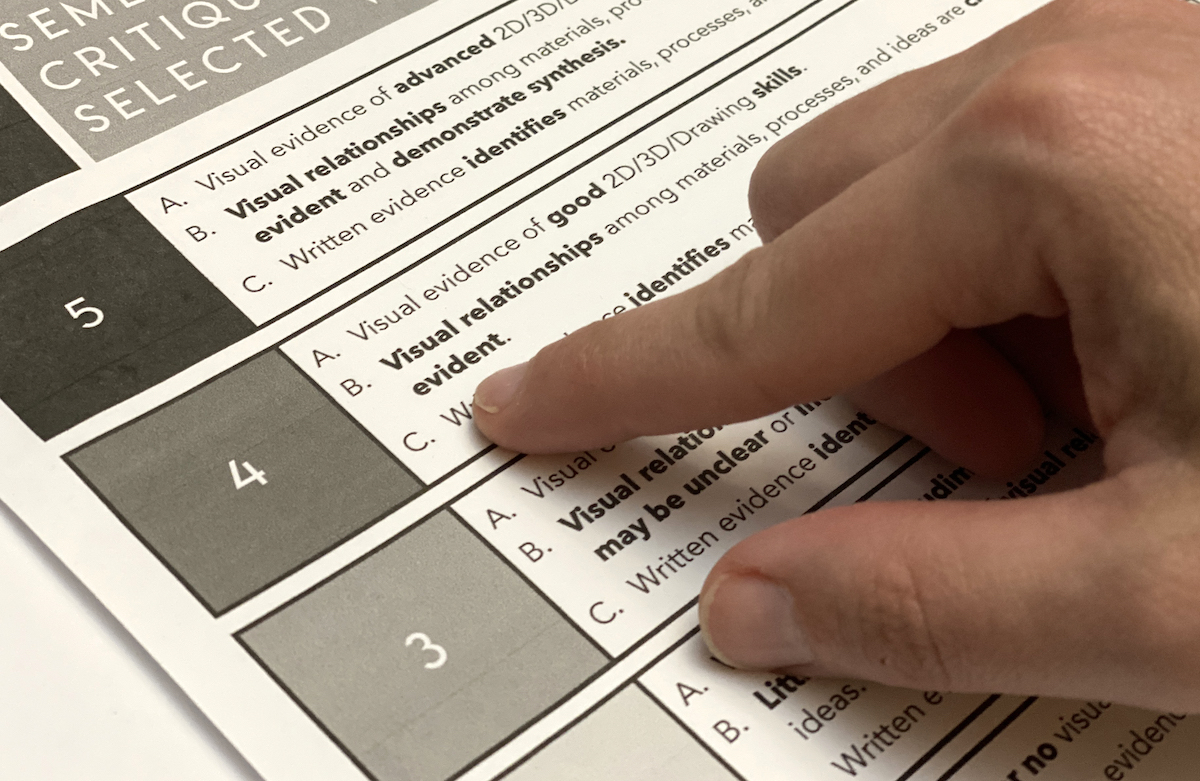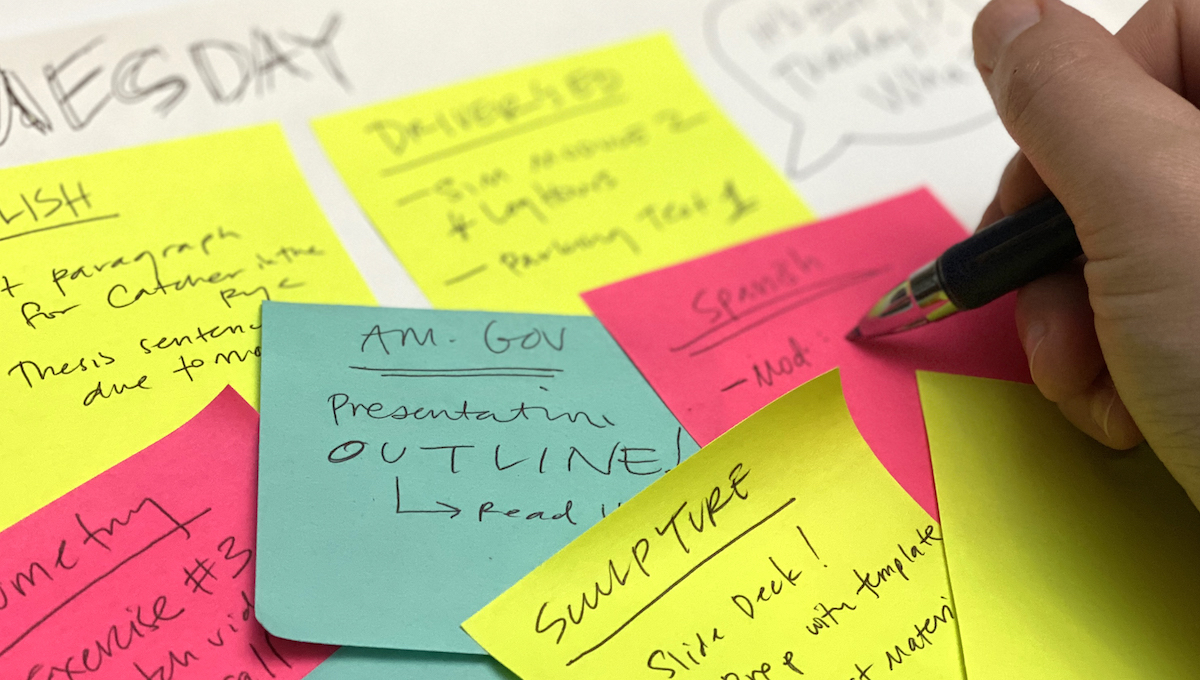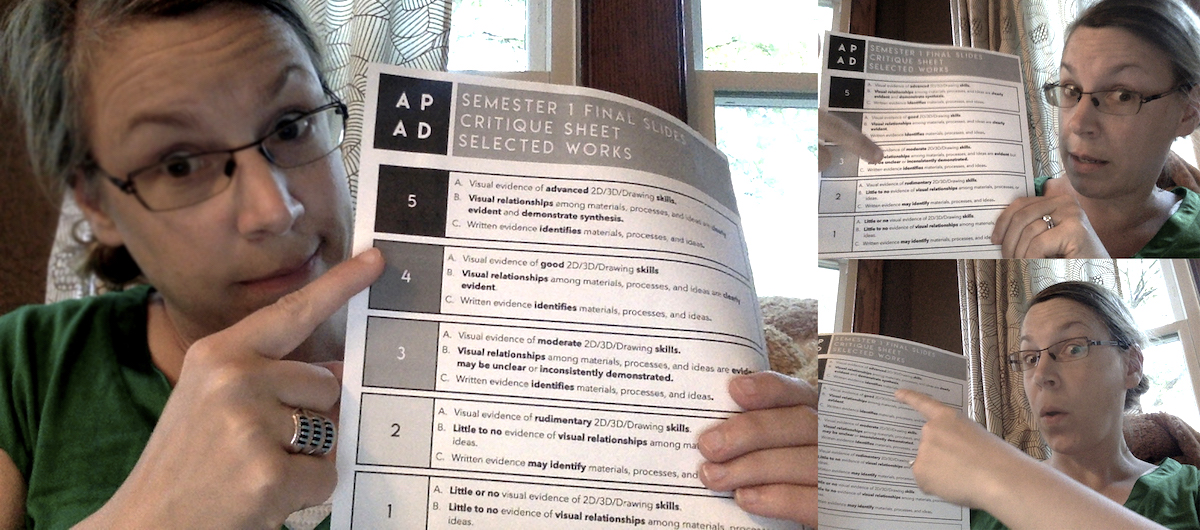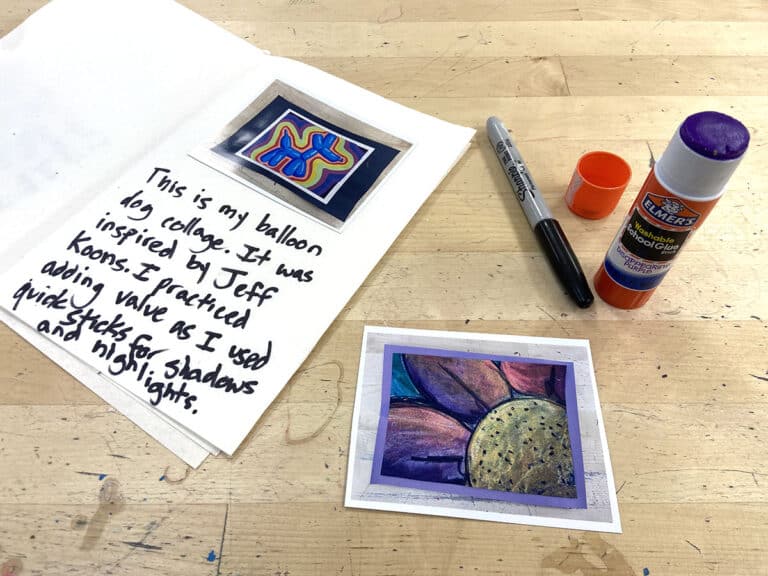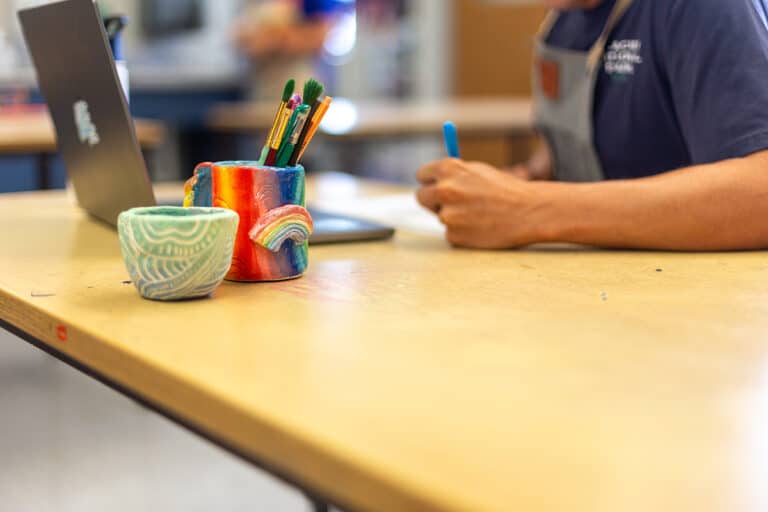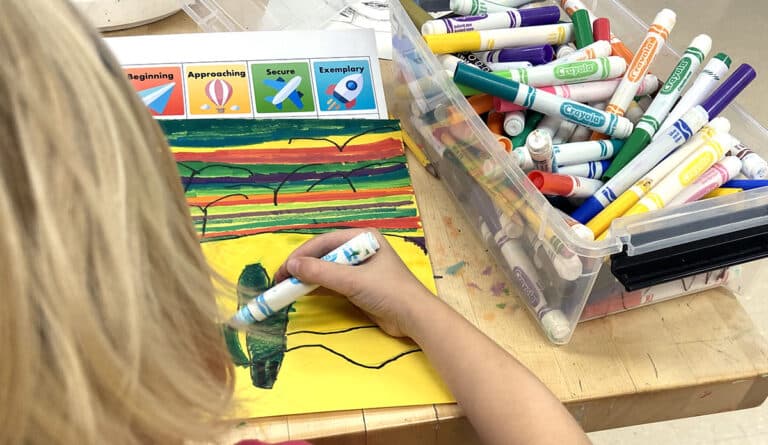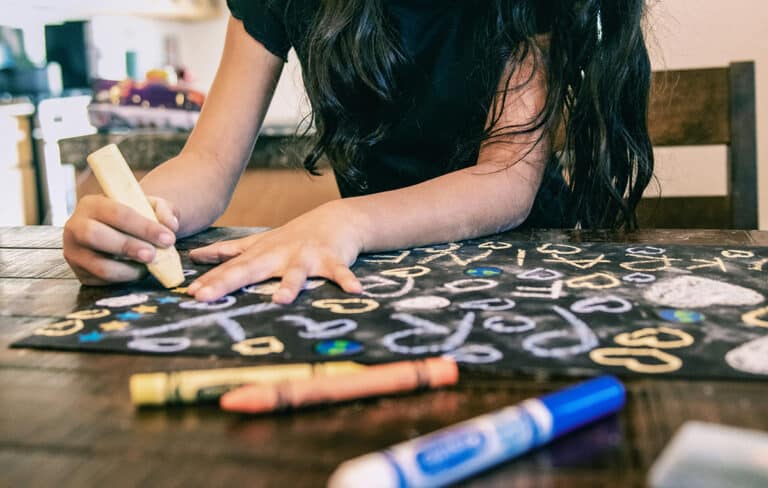Creating authentic assessment in the classroom is an extensive job. Creating strong assessments takes collaboration, alignment, and personal reflection. Given remote learning circumstances, assessment now comes with other challenges to consider.
Before creating a rubric or assigning a grade, you will need to consider some factors:
MATERIALS: How has your course been impacted in terms of materials?
Clearly, if your target was, “Students will be able to demonstrate three glazing techniques,” but now your students don’t have any of those materials in their hands, you can’t ask them to be held to that same expectation. Unless you are providing materials directly to students’ houses and hands, you can’t safely assume all students will have access to a particular material. Your standard and expectations will have to adjust.
TIME: How much time will students actually have to create?
Some schools have adjusted their schedules for online learning, and some will shift again in the fall. Therefore, teachers need to plan for only that time for students to create. This time also includes the time it takes for them to plan, find, and collect materials, and even watch the video you provided for instruction and support. What once was completed in a week, may now take three.
SUPPORTS: What supports/scaffolding will students have in order to achieve my expectations?
Not only does the work take longer to create, but let’s face it, it certainly will not be as stellar as in your classroom. Some students will want to sit and develop their artworks for hours on end, while others may not even have the opportunity to focus for five minutes.
When students were in our classrooms, we could buzz around and help students stay on track, support technical skills as they progressed, and help manage their time with structured schedules. In remote learning, we can provide a ton of various supports but cannot guarantee they will choose to or be able to access them.
So, where do you start?
First, you will need to decide on the essential standards students must have in order to move forward. At the secondary level, we are in a unique situation with our students. We know they will either return to our specific classrooms or to our art colleagues in the near future, and we can get them all caught up when we see them next. We also know that some of our students will not take another art class as they fulfill their graduation credits. And of course, we are fortunate to not be held to high stakes standardized testing. Because we know all of this, we must reconsider what is most important to achieve during online learning.
How can I ensure all students will experience success no matter what their home situation is?
Review National and State Standards to ensure your expectations are hitting the categories of create, present, respond, and connect.
The great thing about our new standards is that they are specific enough to foster the creative process but also provide enough space to help support students’ needs in a variety of ways. Ensuring your lessons align with these standards will help focus your assessments.
Focus on creative thinking skills.
Consider the big picture skills you want students to gain before they leave your classroom. Whether they are moving on to the next level drawing class or are graduating and off to become an engineer, creative thinking skills are the foundational skills needed in an art class. But how do you assess creativity? Start with the creative process inclusive of planning, creating, critiquing and refining, and reflecting. If you structure your assignment by teaching this process, you will authentically be chunking a large daunting artwork into a multi-step, digestible problem to solve. Teaching students there is a process to creating helps them wrap their heads around something that seems abstract and untouchable. “I’m not creative,” turns into, “I know how to create.” This allows us to easily assess and support with feedback as they create.
Break down the creative process.
You can use the steps of the creative process to both formatively and summatively assess your students remotely. The creative process helps teachers monitor progress and supports your students’ needs as they go through their creating independently.
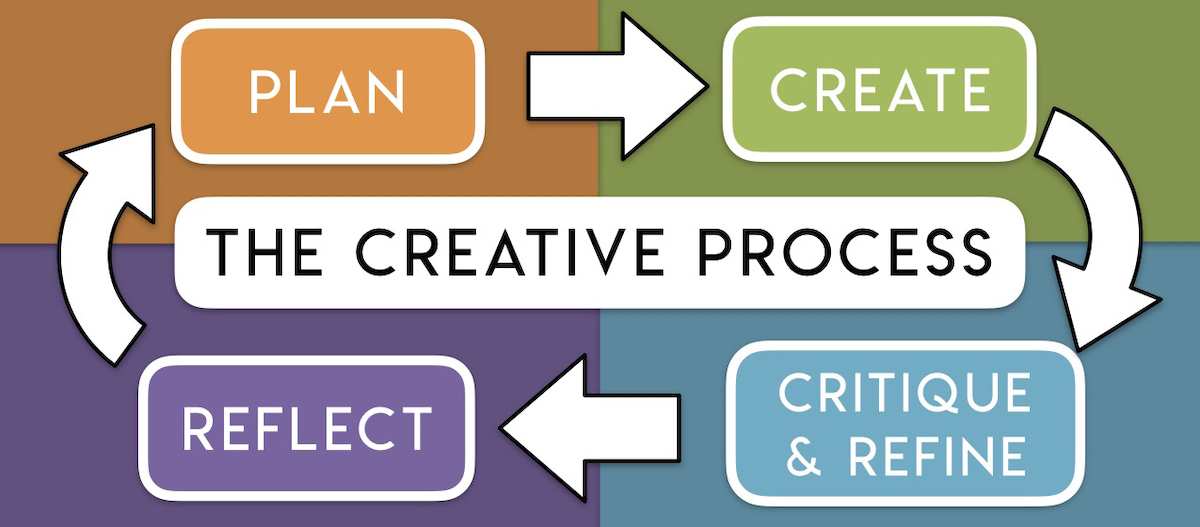
How to Reveal the Creative Process Through Reflection
For example, creating a rubric focused on planning helps identify the expectations for students to brainstorm, research, sketch, and collect materials in preparation for creating. When you can see a student’s planning, you will be able to support their needs more quickly. You can also use the creative process as a summative rubric. Expecting students to identify their process through documentation supports their learning and risk-taking instead of solely rewarding the end result. This expectation significantly cuts down on any plagiarism since students must demonstrate their steps to creating.
Focus on big concepts.
Overarching concepts that can apply to any media and support students’ understanding of art is a great place to start. Composition, for example, is a universal concept that can always stand more repetition. When creating your rubric, provide more weight to composition, or better yet, only assess on composition for this one particular assignment. Instead of assigning a multi-layered assignment in which you once assessed composition, technical skill, meaning-making, and the kitchen sink, try focusing on assessing one piece at a time.
How to Help Students Uncover Their Creative Process
This doesn’t mean that you can’t assign large, multi-layered artworks. Scaffold your layers to assess each concept throughout their artistic process. During the planning phase of a student’s work, you can make sure to provide feedback on several areas, while providing a formal assessment solely on composition. This will also allow you to see what skills or concepts students are mastering, and where they will need support.
Less is more.
Keeping your rubric minimal and consistent will help students access requirements without confusion. Try focusing on assessing one piece at a time. This doesn’t mean you can’t assign large, multi-layered artworks! Scaffold your layers to assess each concept. For example, instead of providing a detailed rubric at the end of the assignment, create several that separate concepts throughout. By the end of the assignment, you may want to ultimately assess several concepts. By focusing solely on one technique during the start of the assignment, students get clear and direct feedback to support them as they work through other skills.
Learn more with Teaching K-12 Art Online
Make sure your assessment system is clear to all students.
The way you assess will definitely look different than when you were in the classroom. Making the shift clear to students and parents will take time, but is essential to keeping clear expectations to all involved. Using multiple modalities such as a PDF document, sample rubrics, and video tutorials breaking down the assessment system will help all parties relax. If your students skip this step, you have a landing place for them to review the documents. Stop repeating the same email, and start linking them to the resources to review.
Ensure equity.
When creating assessments, always ask yourself, “How can I ensure all students will experience success?” That doesn’t mean all students will experience the same levels of success, but you know better than to set them up for failure. Consider your lowest common denominator: What do I know all students can achieve with materials at hand, with the levels of support I’m able to provide, and with the timeframe expected? There are many different ways you can differentiate your lessons, from choice boards to writing and research prompts to creative processes. How and what you assess, however, needs to ensure you are providing a baseline of understanding for all students.
But whatever you do…KEEP. IT. SIMPLE.
Depending on your state or district, assigning points will vary. Focus on the authentic reason for the assessment—to grow! If you want your students to learn, tossing too much at them at once while not in your classroom will just end in a disaster. It’s hard to let go of what we have been developing and fostering for years now that our environment has flipped upside down. Take the pressure off of yourself and your students and keep the expectations clear, simple, and concise.
How has your assessment changed in remote learning?
What key concepts are you focusing on during remote learning?
How has our pandemic shifted your assessment practices overall?
Magazine articles and podcasts are opinions of professional education contributors and do not necessarily represent the position of the Art of Education University (AOEU) or its academic offerings. Contributors use terms in the way they are most often talked about in the scope of their educational experiences.
